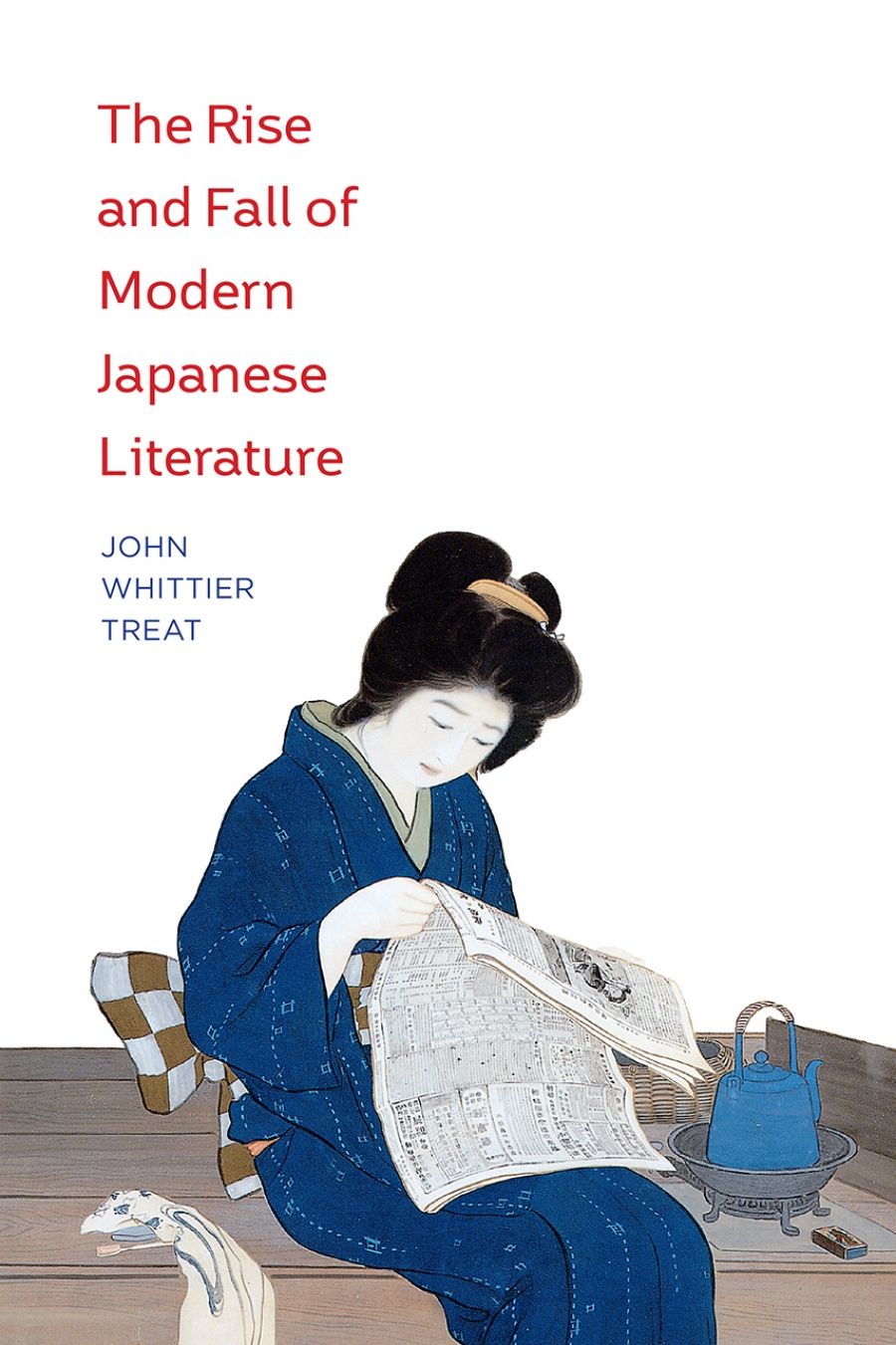
- Free Article: No
- Contents Category: International Studies
- Custom Article Title: Mark Gibeau reviews <em>The Rise and Fall of Modern Japanese Literature</em> by John Whittier Treat
- Custom Highlight Text:
In his 1998 book, Japanese Literature as ‘fluctuation’ (‘Yuragi’ no nihon bungaku), Komori Yōichi deconstructs the concept of ‘modern Japanese literature’ by examining the Encyclopedia of Modern Japanese Literature (『日本近代文学大辞典』), an impressive work that, despite its six volumes ...
- Book 1 Title: The Rise and Fall of Modern Japanese Literature
- Book 1 Biblio: University of Chicago Press (Footprint), $69 pb, 406 pp, 9780226545134
 John Whittier Treat (photograph by Steve Shelton Images)
John Whittier Treat (photograph by Steve Shelton Images)
Komori calls for a literature that rejects the logic of exclusion and embraces multilingualism and multiculturalism; a literature that not only ‘recognises the pluralistic coexistence of minority languages and cultures inside unitary communities’ but that ‘introduces heterogeneity and asymmetry as the basic principles of all relationships’. In many ways, John Whittier Treat’s formidable book is just such a literary history. ‘One aim of this book,’ he writes, ‘is to re-examine certain key conjunctions in the history of Japan’s modern literature where we can excavate just how literary texts came to embody emerging, dominant or resistant strategies of power in society.’ What Treat means by this becomes evident in the first chapter, where he looks to accounts of ‘poison women’ for the ‘origins’ of ‘modern, Japanese, literature’.
The chapter begins with an examination of tsuzukimono, or serialised accounts that appear in tabloid newspapers. Specifically, he looks at Kanagaki Robun’s (1829–1894) ‘Bird-Chasing Omatsu’. Omatsu, a prototypical dokufu or ‘poison woman’, is a stunningly beautiful member of the untouchable caste who uses her charms to seduce, and subsequently bilk, one man after another. Though he does, briefly, engage in textual analysis, Treat is less concerned with what the story says than what it is and what it does. That is, he is interested in its function in the larger context of Japan’s literary development. To this end, Treat takes the reader on a surprising journey that includes the emergence of libel and slander laws, competition between highbrow and lowbrow newspapers, and the occasional mention of Hillary Clinton’s alien baby. Through his discussion of ‘Bird-Catching Omatsu’, Treat examines how discourses of ‘truth’ and ‘fiction’ coalesce in early-Meiji Japan.
This pattern is applied in subsequent chapters, where various texts are juxtaposed with changing technologies, laws, economies, geopolitical situations, and so on. The second chapter reads Higuchi Ichiyō’s famous story ‘Child’s Play’ (‘Takekurabe’) against the rise of the textile industry. In Chapter Three, Natsume Sōseki’s I Am a Cat (1905) is juxtaposed with rakugo (comedic storytelling) and the development of stenography. He examines Taishō literature through the lens of Kishida Ryūsei’s (1891–1929) art. ‘Imperial Japan’s worst writer’, a dodgy fellow named Kim Mun-Jip, is used to examine ‘Japanese’ literature written outside Japan by a non-Japanese. Creole in occupied Japan is explored through the constitution and the rise of boogie-woogie. The remaining chapters look at Fukuzawa Shichirō’s ‘The Story of a Dream of Courtly Elegance’, featuring fantasies of beheaded emperors, the rise of manga, Yoshimoto Banana’s imaginary, schizophrenic Kitchen (1988), Haruki Murakami’s multiple personality disorder, and the wonderfully bizarre world of Takahashi Gen’ichirō.
Treat’s is a unique and unusual narrative (if it can be called such) of modern Japanese literary history – one that interrogates each of those terms in its turn. It is formidable not only in its scope and ambition but also in its writing. Treat’s theoretical analyses makes zero allowances for the uninitiated and are clearly written for a specialised audience with a thorough understanding of literary theory. This is neither surprising nor a defect, but readers who are unfamiliar with Foucault, Jameson, Williams, and the like will find themselves gazing vacantly at no small number of paragraphs and pages.
There are, as always, a few quibbles. The notes are uniformly unkind. Elaboration in some of the notes would have made the book more accessible to non-specialists. The author presumes the reader’s facility with French and German but, oddly, not Japanese. Japanese words are invariably explained, but the Germanically impaired will be forced resort to Google Translate.
In sum, Treat’s book eschews any pretence of comprehensiveness. The combination of a broad, cross-disciplinary examination of ‘literature’ with a narrow focus on specific themes and works means that the text somehow manages to be both far broader and far narrower than conventional literary histories. It is a very welcome addition, and counterpoint, to the existing body of English-language Japanese literary histories.


Comments powered by CComment